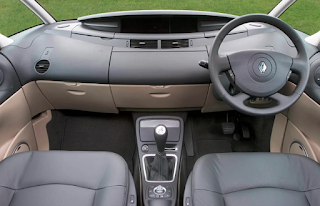TL;DR:
1. Value based pricing works great when trying to establish pricing premium within an existing B2B relationship
2. It can also work with B2B sales cycles, but a classical approach (quantification of value) may not always work in those contexts. Other elements in the pricing/sales toolkit may serve the purpose better
3. B2C value based pricing is a tricky affair. Works at the holistic level but too much of it may end up alienating customers
I have always found value based pricing fascinating: conceptually it makes so much sense, but psychologically, many customers find it difficult to digest. Quick recap first: value based pricing is the approach of anchoring your price point as competition's price + x (where x is the incremental value your product adds vs competition), instead of the typical 'anchoring price against your cost'. Of course it makes a lot of sense intuitively, customers care about what value you add to them, not how much it cost you to produce. Or do they? And why is this stuff so difficult to pull off if it's really intuitive? And are all companies that use cost-plus pricing doing it wrong? Let's explore.
In my experience I have seen value based pricing (VBP) work most effectively in B2B settings, where customers are more likely to listen to an analytical but almost too-transactional quantification of how much more value your product/service offers vs others. But despite the transactional nature of it, VBP is perhaps most useful in settings when you already have deep/warm relationships with customers. Settings where customers are (strategically) already seeing the real world worth of your product or service everyday, and (tactically) tied at the hip with you. In those contexts, VBP is a handy tool to move customers from the gray "I just
know these guys are worth the extra" to "This is exactly why these guys are worth the extra". In these settings VBP is also a handy tool to crack the problem of B2B customers not being a monolith: there may be champions for your product in the business side of the customer org, but procurement will still try to drive a hard bargain. I know this dynamic plays itself out in the apparel industry (where top suppliers do command a premium for valuable differentiators like sustainable operations, ethical hiring practices, co-design studios and the like), and can imagine how it might be playing out in the cloud space as well (tensors?).
The tricky bit is: How do you crack a
new B2B client when you know that your product is demonstrably better? It's not like your prospective customer is seeing that incremental value already: they would be wondering and arguing internally, is it all a mirage or is it real? So how do you get them to part with hard earned cash when there is a rather acceptable (and also conveniently cheaper alternative) out there? I live this reality every day at work from the customer side, where partners / vendors are looking to sell to my firm and we struggle to decide which way to go (get the supposedly superior but pricier option, or stick to a tried and tested package). In these 'new sales' situations, I have seen the classical VBP 'quantify the incremental value' approach fall short. Because data is messy even with an existing relationship / operation, how can an external firm come up with bulletproof data and projections that supporters and detractors will all agree to? And peer benchmarks often get scoffed at: "our situation is unique". I don't think there is a silver bullet solution. Here is my suggested arsenal:
- Get the basics in place. Build a deep understanding of client use case(s). That way in conversations you are hitting the right notes vs going off on tangents / hypotheticals. Also in this bucket of hygiene factors, have a high quality solutions team that is on hand during the deal, and also later so you are truly walking the talk.
- Share case studies / testimonials. These do matter a lot, but need referencing with care. Go overboard and you may lose the audience. Get into numbers and your conversation will be at risk of derailing. There might be exceptions, but I think qualitative yet powerful real life success stories win out over numbers
- Pull in the right decision makers and influencers in the client org. This is the most important one by far. Also the hardest and most time consuming, but always worth the effort. For your value based pricing arguments to fly, a senior stakeholder will probably need to get involved, buy the logic, and sign off. Someone who is willing and capable enough to stick his/her neck out for a more expensive and eyebrow-raising proposal. The second type of stakeholder you need on your side is an influencer, someone who will do the legwork and champion your cause, irrespective of whether they are senior or mid level or junior. E.g. if selling cloud solutions, you need someone on the client side who will convince the rest of their org to behave like they are investing in a once in a generation upgrade of IT architecture, not doing a BAU procurement
- Various pricing levers. Introductory pricing. Price fencing. Revenue sharing / cost save linked deals. All fair game. But only if you have #3 above. Else you are just kidding yourself that you are doing VBP while the client org is just pushing you to a 'lowest bidder wins' game
- Be prepared to walk away. With some clients: just leave it. If they are not sophisticated enough to appreciate your value during the sales cycle and prefer a 'lowest bidder wins' approach, then they are likely not sophisticated enough to utilize your value-add features, and thus may never be a lasting client
So much for B2B. When we move to B2C, value based pricing gets a bit trickier. In the simplest iteration of VBP, many firms
do successfully charge a 'clean' premium for products that stand head and shoulders above the rest. Think luxury goods, or even Apple (epitome of tech luxury, despite products like the iPhone being ubiquitous). Their pricing is obviously not just cost plus, as evidenced by the higher margins that they enjoy, even after considering somewhat higher costs across the board. But that is perhaps reflective also of the concept of pricing as a positioning choice and indicator of quality vs pure VBP. And as soon as you go beyond the clean 'higher price for a more valuable product', the complications begin...
BMW has been facing a lot of flak from customers for the last few years because it began charging for offering Apple CarPlay as an annual subscription service (a couple of hundred dollars per year). Anecdotally and referencing surveys (
here), I can say that CarPlay and Android Auto are super valuable features for car buyers, so why aren't they willing to pay for the value? Granted, the value and price comparison for CarPlay here is against a base functionality (a BMW car without CarPlay) vs against competition, but the concept should hold and somehow it doesn't. BMW tried bundling CarPlay with other features, they also tried explaining that there is real development cost associated with keeping a CarPlay instance up to date (whoa: so it's cost plus pricing then?), but to no avail: customers keep complaining. I think part of it is because no other carmaker on the planet charges for CarPlay or Android Auto, either upfront during the purchase or over time.
But even when
everyone does it, sometimes B2C customers just don't like paying extra for each extra feature (think of frustrations with cable companies when they charge extra for set top boxes). Must be something to do with the mental fatigue of applying your decision 'muscle' again and again, for the base product as well as each incremental feature you would like but costs a little more. I recall decision science has some fascinating findings in this space, e.g. why do we happily spend $2 asking for guacamole on a burrito, but struggle to pay for a paid app on the app store that costs the same $2? Some related commentary on this topic in one of my earlier posts
here. But fatigue apart, there might be another psychological factor at play: no one likes hidden costs or being 'nickel and dimed' or 'gouged', which is what VBP for features can appear to be (value extraction in more technical terms). So fatigue and a sense of fairness/transparency, two related but distinct reasons why customers may sometimes prefer a single all-in price.
In contrast to all this, Costco successfully anchored it's entire business model on an alternate approach to VBP: honest pricing. Never charge more than 14% margin; pass off the rest to customers. In a retail landscape where true cost of goods can get difficult to assess, customers lapped it up and the rest is history. This is not at all to imply that Value Based Pricing doesn't work for B2C. Tesla for one has shown that customers will accept step-pricing even if not anchored in cost (lower Tesla variants have their range limited by software, a limitation which can be removed for a few thousand dollars, but the net cost of upgrade to Tesla is clearly zero since the car came with the higher range hardware pre-installed). And customers seem to be ok with that, but then Tesla has it's own unique set of circumstances (super passionate owners, a very public struggle with profitability so step-pricing appeals to fairness, CEO led transparency in every move, etc).
Messy examples and counter-examples, but hopefully the point is made: Value based pricing (and probably all of pricing) is a complex topic, so there is no one-size-fits-all solution.
Note: For ease of narration, I used the term 'product' everywhere when I really meant 'product or service'










































